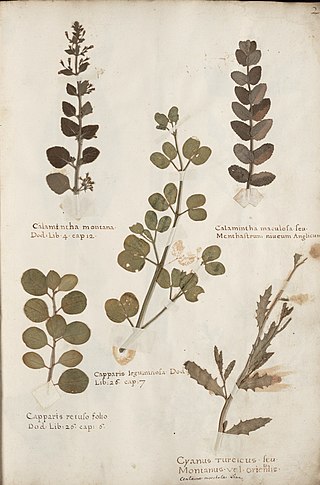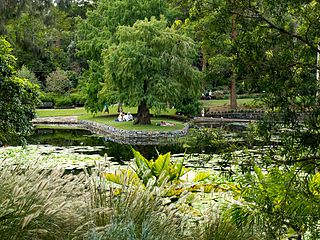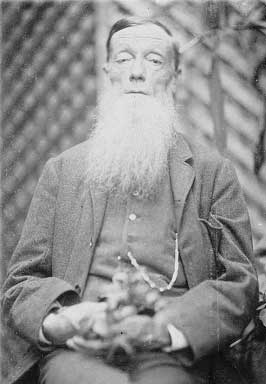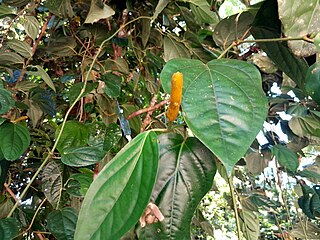
A herbarium is a collection of preserved plant specimens and associated data used for scientific study.

The City Botanic Gardens is a heritage-listed botanic garden on Alice Street, Brisbane City, City of Brisbane, Queensland, Australia. It was also known as Queen's Park. It is located on Gardens Point in the Brisbane CBD and is bordered by the Brisbane River, Alice Street, George Street, Parliament House and Queensland University of Technology's Gardens Point campus. It was established in 1825 as a farm for the Moreton Bay penal settlement.

The Adelaide Botanic Garden is a 51-hectare (130-acre) public garden at the north-east corner of the Adelaide city centre, in the Adelaide Park Lands. It encompasses a fenced garden on North Terrace and behind it the Botanic Park. Work was begun on the site in 1855, with its official opening to the public on 4 October 1857.

Mount Coot-tha is a mountain and a suburb of the City of Brisbane, Queensland, Australia. Visible from much of the city, Mount Coot-tha is a popular bushland tourist destination including the Mount Coot-tha Lookout, Brisbane Botanic Gardens and Sir Thomas Brisbane Planetarium, as well as a mountain drive, bike trails, parks including a waterfall, and television and radio towers. In the 2021 census, Mount Coot-tha had a population of 0 people.

The Taylor Range or Herbert Taylor Range is a mountain range on the western edge of Brisbane, Queensland, Australia. It was first named The Glenmorrison Range by John Oxley during his exploration of the area in January 1824. In 1828, the colonial botanist Charles Fraser, whilst looking at the range from the Ipswich area, noted the bearings as Sir Herbert Taylor’s Range from which the current name derived.

Floydia is a monotypic species of tree in the family Proteaceae native to Australia. It is a somewhat rare tree found only growing in the rainforests of southeastern Queensland and northern New South Wales. The sole species is Floydia praealta which is commonly known as the ball nut or possum nut.

Otto Wilhelm Sonder was a German botanist and pharmacist.

Frederick Manson Bailey was a botanist active in Australia, who made valuable contributions to the characterisation of the flora of Queensland. He was known by his middle name, Manson.

The Brisbane Botanic Gardens are located 7 kilometres (4.3 mi) from the Brisbane CBD at the foot of Brisbane's tallest mountain, Mount Coot-tha in the suburb of Mount Coot-tha, Queensland, Australia.
Leslie Pedley was an Australian botanist who specialised in the genus Acacia. He is notable for bringing into use the generic name Racosperma, creating a split in the genus, which required some 900 Australian species to be renamed, because the type species of Acacia, Acacia nilotica, now Vachellia nilotica, had a different lineage from the Australian wattles. However, the International Botanical Congress (IBC), held in Melbourne in 2011, ratified its earlier decision to retain the name Acacia for the Australian species, but to rename the African species.

The National Herbarium of Victoria is one of Australia's earliest herbaria and the oldest scientific institution in Victoria. Its 1.5 million specimens of preserved plants, fungi and algae—collectively known as the State Botanical Collection of Victoria—comprise the largest herbarium collection in Australia and Oceania.

Cyril Tenison White was an Australian botanist.

Walter Hill (1819–1904) was the first curator of the Brisbane Botanic Gardens at Gardens Point in Brisbane, Australia.
Anthony Russell Bean is an Australian botanist who works at the Queensland Herbarium and Brisbane Botanic Gardens, Mount Coot-tha. Since 1982, he has led the Eucalyptus Study Group of the Society for Growing Australian Plants.

Diedrich Henne was a German-born botanist and plant collector. He emigrated to Australia and was employed as an assistant to the colonial botanist Ferdinand von Mueller at the Melbourne Herbarium.
Canarium australasicum, commonly named mango bark, brown cudgerie or parsnip wood, is a species of rainforest trees, of the plant family Burseraceae. They are endemic to Australia, in eastern Queensland and far northeastern New South Wales.

John Frederick Bailey was a botanist and horticulturist active in Australia in the late 19th and early 20th century.

The National Herbarium of New South Wales was established in 1853. The Herbarium has a collection of more than 1.4 million plant specimens, making it the second largest collection of pressed, dried plant specimens in Australia, including scientific and historically significant collections and samples of Australian flora gathered by Joseph Banks and Daniel Solander during the voyage of HMS Endeavour in 1770.
Ferdinand August Weinthal was an Australian botanist and orchid grower who, in the early 20th century, was responsible for the collection of multiple eastern Australian orchids which were previously unknown to western science.

Piper mestonii, commonly known as Queensland long pepper or simply long pepper, is an evergreen vine in the pepper family Piperaceae native to rainforests of New Guinea and Queensland, Australia.
















